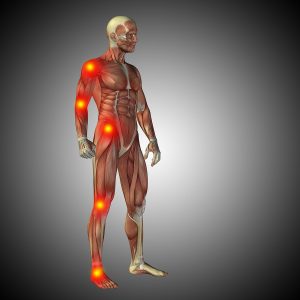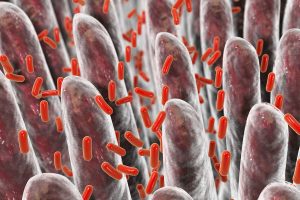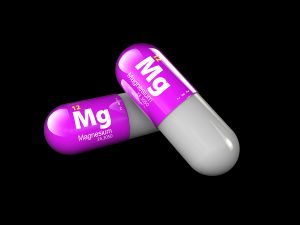A review article from June 25, 2018 discusses that frequent flying can increase cancer rates. A study showed that cancer of the breast, cervix, skin, thyroid and uterus are about twice as common in female stewardesses than in women at large. Also, gastrointestinal system cancers including cancer of the colon, stomach, esophagus, liver and pancreatic cancers are more common. This observation was true in both male and female flying personnel who engage in frequent flying. This publication comes from a scientific paper published on June 26, 2018.
Study of flight attendants
Patients from the National Health and Nutrition Examination Survey (NHANES) served as a control for flight attendants. This control group consisted of 2729 patients; they were of a similar socioeconomic status as the flight attendants. In contrast there were 5366 flight attendants with much higher cancer rates than normally expected. Specifically breast cancer had a 1.51-fold higher frequency than the control group. Melanoma had a frequency of 2.27-fold in comparison to controls, and non-melanoma cancers had a cancer rate of 4.09-fold when compared to controls. Non-melanoma cancer cases include basal cell and squamous cell carcinomas.
Cancer rates in pilots
In a meta-analysis of various studies it became obvious that pilots had 20% more prostate cancer than a non-pilot control group. However their mortality was not higher than controls.
In an interesting study spanning over 60 years Icelandic airline pilots underwent an analysis for cancer development.
83 cancers were registered. The general population (non-pilots) served as controls. There was an increase of 2.42-fold for all cancers compared to controls. Prostate cancer was higher in these pilots by 2.57-fold. Malignant melanoma had a 9.88-fold increase in pilots in comparison to controls. The basal cell carcinomas in these pilots were 3.61-fold more common than the rates in the controls. With regard to basal cell carcinomas of the trunk there were 6.65-fold more of them in comparison to controls.
The difference between the pilots and the general population was likely due to the higher exposure to cosmic radiation. This is what the authors concluded.
How does cancer develop?
There are several ways cancer can develop. One of the known cancer causations is ionizing radiation. We know a lot about this from the atom bombs of WWII in Japan. There were many more thyroid cancers in children than were normal following the dropping of the atom bombs.
But diagnostic CT scans and X-rays are not without risk of cancer development either. There is a lag period of 10 to 20 years and even longer. But after this time the higher cancer rate becomes measurable. A person who had a CT scan done as a diagnostic test in childhood will still have a 25% higher cancer rate 15 years later. This is how powerful radiation of the DNA of our cells is despite inherent repair mechanisms that fight back to keep things normal.
Single cancers versus multiple cancers
It is interesting that female stewardesses and male pilots came down with a mix of various cancers. There were skin cancers, breast cancers, cancers of the prostate and many gastrointestinal cancers. The numbers were not big enough to show statistical significance for leukemia also being a likely cause of cancer from cosmic radiation.
If cosmic radiation was going through the body randomly hitting various DNA strands in all cell types, which could explain why a random number of cancers develop in those cells that got the highest exposure. The ones who got above average cancer were stewardesses and pilots who were longest on their jobs. A variety of cancers would develop from various tissues. This is exactly what the studies have shown. Radiation exposure following the Fukushima disaster led to thousands of thyroid cancers.
There are frequent flyers like business travelers and vacation seeking retirees who will also be at a higher risk of developing cancer. The more they fly, the higher the risk.
Other causes of cancer
Cosmic radiation is only one cause of cancer. There are many other causes of cancer. If you smoke heavily or abuse alcohol this can cause genetic mutations of cells that can develop into cancer. There is a pathway to cancer, which consists of initiation, promotion and progression. After those initial hurdles the cancer cell will multiply and start metastasizing into other areas of the body.
Carcinogens can damage the DNA of cells. In the case of pollution carcinogens enter the body through the air. But consuming processed meat and red meat has a proven link to cancer development as well, namely colon cancer.
Diverse factors all can cause cancer
Chronic inflammation from chronic infections is also carcinogenic. Chronic gastritis is caused by H. pylori. After years of infection with this pathogen stomach cancer can develop. Hepatitis viruses that are chronically present in liver cells can be the cause of liver cancer. Human papilloma virus (HPV) is the cause for the development of cancer of the cervix. The majority of cancer is caused from the environment or by poor life styles. Only 5 to 10% of cancers are inherited.
Tumor suppressor genes are important in terms of resisting the development of cancer. The TP53 gene produces a protein that interferes with the multiplication of cancer cells. Cancer cells in turn can produce a protein that interferes with TP53 function. The end result is that it will interfere with the body’s immune system to produce killer T cells. This way the cancer has the upper hand. There are some herbs that have shown anti-cancer effects, such as curcumin. https://www.askdrray.com/curcumin-and-cancer/. As I explain in this blog, there are absorption problems with curcumin presently. It is not yet primetime for curcumin, but it could be once the absorption problems are overcome. Nevertheless the research surrounding curcumin is interesting.
Conclusion
Several interesting studies have shown that stewardesses, pilots and frequent airplane travellers have a higher risk of developing cancer. Research groups have been careful to control these studies for lifestyle factors and other causes of cancer. Exposure to cosmic radiation is the common culprit that is behind this cancer causation. There was a multitude of cancers rather than one single type of cancer in pilots and stewardesses. This makes it more plausible that it is indeed cosmic radiation that caused the cancer increase. But cancer development is complex, and I have summarized this briefly here. It is important to be aware of all the possible causes of cancer. This allows you to minimize your exposure to carcinogens. We all get exposure to carcinogens from pollution. In addition we get exposure to cosmic radiation according to how much time we spend flying to holiday destinations or on business trips. Be safe and be informed!















